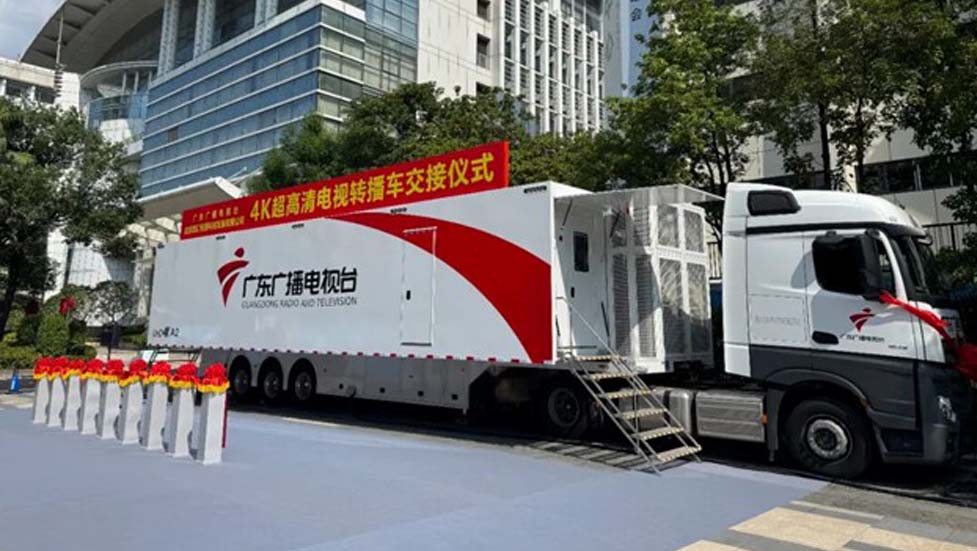Digital delivery heats up with Pitch Blue
If you haven’t seen the details of the new delivery system, you may want to talk to your program department to get up to speed. A new cache server will be arriving to deliver HD and SD programming. They will be using a fairly advanced version of H.264 to encode the video, so you will not be able to play any of the files natively. Your choices to extract the content will be to transfer/transcode them to your playback server or use their single VDCP-controlled HD/SDI output. Metadata describing each feed is also delivered along with the video file. From a technological viewpoint, they will be using a multiplexed ASI real-time feed to deliver content. I am told that there will be two streams, each capable of moving two SD and two HD programs in real time. At full capacity, the system could be delivering eight simultaneous file streams. The computer will record the entire stream, demux and save the individual files. This is a new approach, because most systems conduct IP over satellite delivery methods.
At the same time, Pathfire is readying a new server to replace the current DMG that is in place at many facilities. This time, they, too, will be using some advanced encoding. The big difference with the new unit is that stitching, transcoding, transfer and automation connection is included in the box. The really big news is that they will no longer ask for a license fee as before. Be aware that the free license applies only to the new unit. The existing DMG is still subject to the old fees. They will start with HD programming on the new box. So, for a period of time, both units will be active. Eventually, the services on the older DMG will transfer over, rendering the current unit obsolete.
The reason I mention these services is that they will be showing up in many of your facilities unsolicited. Contact your automation provider to see what provisions they have to accommodate. There are some significant workflow improvements that you can take advantage of if you are not currently using file-based ingest of this material.
Design complexity
We’ve all watched in recent years as IT technology has crept into our video facilities. Sometimes, if feels like “kudzu” has overgrown our time-tested technology and workflows. (If you don’t know about kudzu, ask one of your southern colleagues.) The problem of fusing mature technologies is that the two sides often use the same language to speak about completely different things. Ask the IT director and the chief engineer each to bring you a router and see if they come back with the same thing.
It’s been difficult for us “old school” types (those who remember when tape came on a reel) to absorb terms like “metadata,” “essence” and “H.264,” but we figured out that IT was just talking about run sheets, video and compression. How do you deal with evaluation of a new IT technology in your video context?
As a professional tasked with dealing with the ever-changing world of video technology, I must look carefully at each new offering to see if it adds real practical value to our businesses. The method I use may be of some help to you.
The professional video industry's #1 source for news, trends and product and tech information. Sign up below.
In my experience, there are four factors to consider when determining the value of any new technology: money, time, resources and quality. Think of them as the corners of a box. The first task is to see how big the box has to be. Ask these questions: Can I afford it? Does it deliver on time? Does it deliver a quality result that meets or exceeds the current requirement? How much of my people’s time will it take to understand, to deploy and to use?
If it’s possible to build a big enough box, then determine what shape the box has to take. If you have one or more of the corners pinned down, the others have to stretch to keep the box large enough. Most tasks have a deadline, so the time corner is not unrestricted. Most of us have hard numbers in our capital budgets, so that corner may also be restrained. You probably want to reduce the amount of time it takes to do the task, so that corner wants to move in. That leaves the quality corner to handle most of the stretching.
Often, a low-cost technology is very tempting. Unfortunately, this is exactly the point where the mismatch between video and IT technology causes confusion. We often see offers of products like “off-the-shelf” servers or storage adapted from other business workflows. While many of these technologies are singing along happily at banks and insurance companies, conducting thousands of transactions per second, they may not meet the specific, stringent needs of broadcast video. They might, however, satisfy the budget number.
The sober analysis has to be: Is it good enough? This is where you must contribute your video expertise. The IT guys might be thinking of video as the stuff that comes on YouTube. Your challenge is to determine if the new technology can stand up to the 24/7 reliability and the frame-accurate standards demanded for your playout. IT solutions are getting better all the time, but sometimes the tempting low cost does not pass the “box test.” Use your talents to full advantage when working through these decisions.
